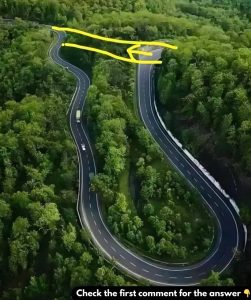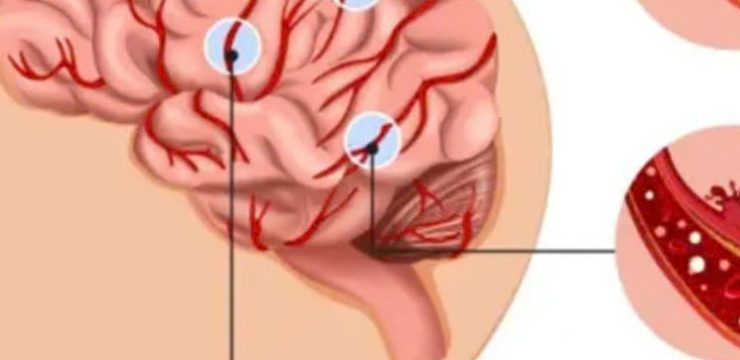When it comes to road design, many assume that straight, flat roads are the best option for safe and efficient travel. However, the reality is that these roads can present significant risks, especially when compared to winding roads with gentle curves. Curved roads are actually designed with safety in mind, helping to keep drivers alert, engaged, and better prepared for the unexpected.

The Dangers of Straight, Flat Roads
Driver Fatigue and Inattention
Driving on a perfectly straight road for long periods may seem ideal, but it often leads to driver fatigue and inattention. When a driver isn’t required to make frequent adjustments in steering or speed, their mind tends to wander, which increases the risk of accidents. Over time, this lack of mental engagement can lead to drowsiness, causing drivers to lose focus or even fall asleep at the wheel.
Increased Risk of Accidents
On a straight, flat road, the monotony can also reduce a driver’s ability to react quickly to sudden changes, such as a car stopping ahead or an animal crossing the road. When attention fades, reaction times slow, creating dangerous situations. Without the mental stimulation that winding roads provide, straight roads can become hazardous.
How Curved Roads Keep Drivers Engaged
Mental Stimulation and Concentration
Winding roads with gradual curves naturally keep drivers more mentally engaged. When navigating turns, drivers are forced to adjust their speed and steering constantly, keeping them focused on the road. This heightened level of concentration can help prevent the inattentiveness that so often leads to accidents on straight roads.
Reducing Driver Fatigue
By requiring more frequent adjustments, curved roads help prevent the kind of boredom that leads to fatigue. These subtle changes in direction keep the brain active, making it easier for drivers to maintain their focus over longer periods. As a result, winding roads can actually help keep drivers safer by keeping them alert.
The Science Behind Curved Road Design
Curve Radius and Centrifugal Force
Curved roads are designed with careful attention to the curve radius and centrifugal force. Engineers calculate these factors to ensure that vehicles can safely navigate turns without losing control. The goal is to create a smooth driving experience that keeps drivers engaged without pushing their vehicles to dangerous limits.
Safety at High Speeds
While high speeds can be dangerous on straight roads, curved roads are designed to manage speed more effectively. The gentle curves encourage drivers to slow down naturally, reducing the risk of high-speed accidents. This combination of mental engagement and speed control makes winding roads much safer for drivers.
Challenges of Steep, Straight Roads
Loss of Control on Steep Descents
Steep, straight roads present unique challenges, particularly for larger or heavily loaded vehicles. When descending on a steep incline, it becomes much harder to control speed, especially without curves to naturally reduce velocity. This loss of control can lead to dangerous situations, such as brake failure or skidding.
Visibility Issues
Visibility is another challenge on steep roads. Drivers may struggle to see what lies ahead, making it harder to anticipate and respond to potential hazards. When combined with the increased difficulty in controlling speed, this limited visibility can significantly raise the risk of accidents.
Why Winding Roads Are the Safer Choice
Improved Driver Reaction Times
Winding roads force drivers to stay alert and focused, improving their reaction times in the event of sudden changes. The need to constantly adjust to the road keeps drivers more aware of their surroundings, making them better prepared to handle unexpected obstacles.
Natural Speed Control
Curved roads naturally encourage drivers to reduce their speed, especially when approaching tighter turns. This reduction in speed can help prevent accidents, particularly in areas where sharp turns or unexpected hazards may arise. In contrast, drivers on straight roads are more likely to maintain dangerously high speeds.
The Time-Safety Trade-Off
Slower Travel, Greater Safety
While winding roads may take longer to travel than straight highways, the extra time is a small price to pay for the enhanced safety they provide. By keeping drivers more engaged and ensuring better control of their vehicles, winding roads significantly reduce the likelihood of accidents caused by inattentiveness or loss of control.
Balancing Time and Safety
Although straight roads might offer quicker travel times, they often come with a higher risk of accidents due to driver fatigue, inattention, and higher speeds. By contrast, winding roads offer a safer, more controlled driving experience that prioritizes safety over speed.
Understanding the Engineering of Curved Roads
Centrifugal Force and Stability
One of the key engineering principles behind curved roads is the balance of centrifugal force. As vehicles round a curve, they experience outward force, which can push them off course. Road designers take this into account by designing curves that are wide and gentle enough to prevent skidding while still keeping drivers engaged.
The Importance of Gradual Inclines
Gradual inclines paired with curves offer additional safety benefits. Unlike steep, straight roads, which can cause loss of control, gradual slopes help drivers maintain better control over their vehicles. This design element is particularly important for larger vehicles that struggle with braking on steep descents.
Why Winding Roads Are Safer
In the debate between straight and winding roads, the evidence is clear: winding roads are safer. By keeping drivers mentally engaged, naturally reducing speed, and improving reaction times, curved roads offer a much safer driving experience than their straight counterparts. Though they may take a bit longer to travel, the enhanced safety and reduced risk of accidents make winding roads the obvious choice for safer journeys.
So, next time you find yourself navigating a winding road, remember that those curves aren’t just for scenery—they’re designed to keep you safe.





